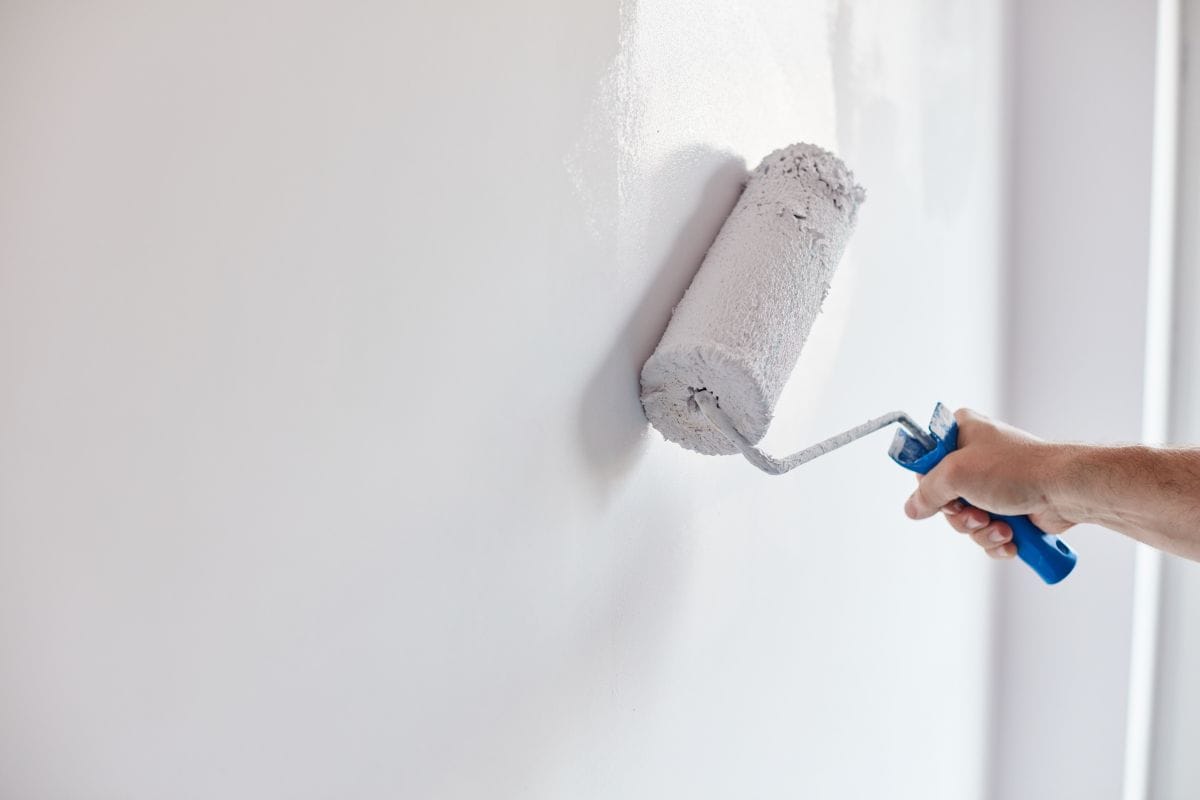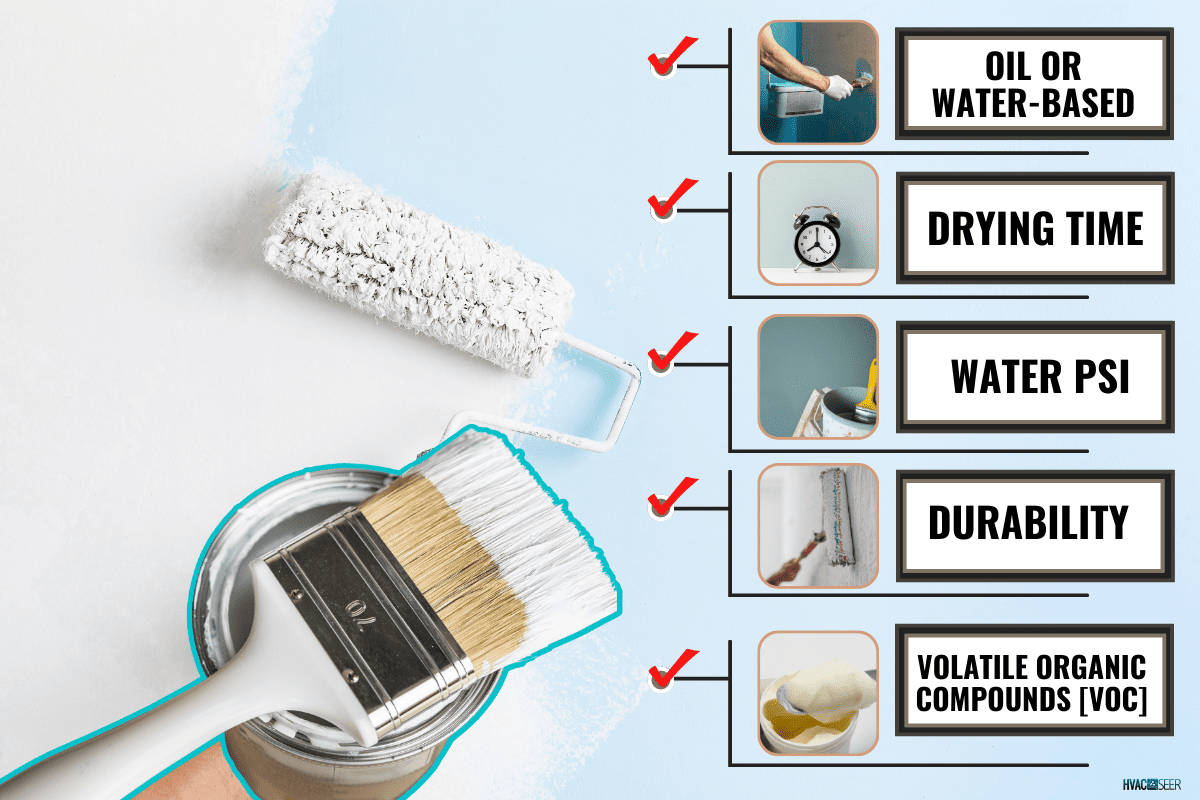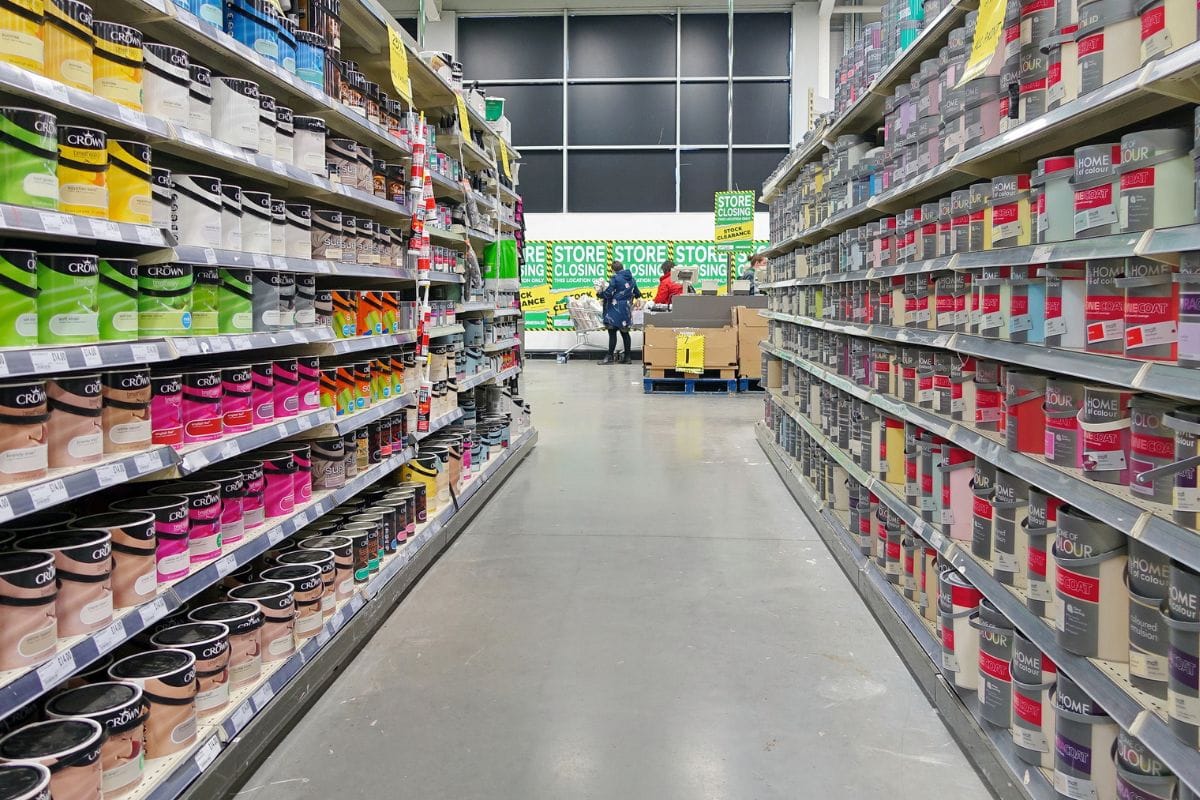Due to gravity, water will always find its way toward any structures below the ground level. Therefore, water can seep through the walls and into your basement. To prevent this problem, you need to waterproof it. We researched some of the best waterproofing paints and focused on Zinsser Watertite and Drylok.
Zinsser Watertite and Drylok are considered among the best basement waterproof paints you can use to seal your basement against moisture.
Both paints can resist mold, have a smooth finish, are VOC compliant, and last up to 15 years. The downside of Zinsser Watertite is that it hardens when the container is left open, while Drylok becomes sticky under a similar situation.
They have differences; the water-resistant PSI of Zinsser Watertite is up to 34, and Drylok is up to 15. You can also re-coat the former after every four hours and the latter after every two or three hours.
Keep reading to learn the pros and cons of Zinsser Watertite and Drylok basement waterproofing paint. Included are the features, differences, and similarities between these two paints. Lastly, learn how to apply one of the paints on your basement wall.
Basement Waterproof Paints

There are many basement waterproof paints that you can use to seal your basement. We have narrowed them down to two, Zinsser Watertite and Drylok. As a way of helping you choose between the two, we have discussed each product below:
Zinsser Watertite
Zinsser Watertite is an oil-based paint that can be used in the interior and exterior of your home. Therefore, it's excellent for use in your basement because it seals against moisture. Besides, it protects against mold degradation for up to 5 years.
Whether the walls are wet, dry, or damp, you can apply this paint without experiencing any problems. Besides, you can apply it every four hours, though it takes about two weeks to cure completely.
You can tackle efflorescence, the white patches you may have seen on your basement walls. These are salt deposits that form after the moisture evaporates. Using Zinsser, you can prevent this problem from recurring, as it can cause damage to your basement.
This paint will give you a smooth finish. This is contributed by the fact that it does not pick up dust or dirt easily. Furthermore, it does not clamp easily while painting, meaning your surface will not look gritty.
Most traditional paints contain Volatile Organic Compounds [VOC] that can be toxic when inhaled. In contrast, Zinsser Watertite has reduced VOC in it. The benefit of this is that you do not have to put up with the strong odors that are present after newly painting a surface.
The paint's coating is designed to resist water with up to a PSI of 34. After painting, it may take you a long time to re-paint, as it can last 15 years.
Below is a summary of the pros and cons of Zinsser Watertite in tabular form:
| Pros | Cons |
| Less odor | Can become very hard and un-reusable if the container is left open. |
| Lasts long | |
| Dries fast | |
| Smooth finish | |
| Prevents destruction by mold | |
| Resists water up to 34 PSI |
Drylok
Check out this Drylock waterproof paint.
Drylok is a water-based paint, excellent for waterproofing your basement, and provides a smooth finish. It protects against mold and mildew and can resist water up to a PSI of 15.
In addition, it can protect against radon gas penetration, is VOC compliant, and has a lifespan of 15 years.
This waterproof paint requires at least two coats, and you can re-coat every two to three hours. However, it fully cures in 24 hours.
The table below provides a summary of the pros and cons of Drylok waterproof paint:
| Pros | Cons |
| Smooth finish | Can be sticky when the container is left open |
| Resists mold and mildew | |
| Lasts long | |
| Dries fast | |
| Resists water with up to a PSI of 15 | |
| VOC compliant |
Differences And Similarities Between Zinsser Watertite and Drylok

Both Zinsser Watertite and Drylok waterproof paints are excellent for preventing water from seeping into your basement. Each has many benefits and a few drawbacks. Below are the similarities and differences between these two products:
Similarities
- Both paints can resist mold and mildew.
- Each can last up to 15 years.
- Their formulas consist of less Volatile Organic Compounds.
Differences
- Drylok has a faster drying time of one hour than Zinsser Watertite.
- Zinsser Watertite resists water at a PSI of up to 34, while Drylok resists up to a PSI of 15.
- Drylok is known to prevent radon gas from passing through the walls.
- Zinsser Watertite hardens when the container is left open, but Drylok becomes sticky.
Factors To Consider When Choosing Waterproofing Paint

Before you pick a paint, you need to consider several factors to help you make a decision. Below are a few factors you may want to review before buying paint:
Oil Or Water-Based
Water-based paints are recommended because they are easier to work with. They take a shorter time to dry and have less VOC and odor.
On the contrary, oil-based paints take longer to dry but do not wear fast. This is because they can withstand harsh weather.
Drying Time
The drying time of your paint can determine your paint type. If it takes a long time to dry, there is a higher risk of it being accidentally ruined.
A paint that cures fast is easier to work with as it has a lower chance of being ruined. You can have a superb finish within a day and not have to wait as long.
Water PSI
Water can slowly damage a basement without you noticing. It can seep in slowly until suddenly, one day, you see the damage that started many months before. That is why you need to choose a paint with a higher water pressure resistance.
Durability
A waterproof paint that lasts long can keep your basement dry much longer. This can save you money and time spent on repairs.
Volatile Organic Compounds [VOC]
Many manufacturers make paints with low VOC, which means they have less odor. You can enjoy your basement after painting because you don't have to wait for the paint odor to go away.
How To Waterproof Your Basement Using Drylok
This is a set of drywall knives you can find on Amazon.
You've learned the features, similarities, and differences between Zinsser Watertite and Drylok. You may want to know how to waterproof your basement. Below is a step-by-step guide on how to apply Drylok to your basement walls:

Smoothen The Wall
- With a drywall knife, scrape off old paint.
- You may use an etcher to remove efflorescence if there is any. Spray the affected areas as per the instructions in your manual. Depending on how severe it is, you may spray a second time. Rinse off with water.
- To smooth out your wall, you can use an angle grinder.
- Wipe off the dust from the wall.
Paint The Wall
- Next, pour some paint into a pan.
- Dip your paintbrush into the paint, and start painting the bottom edge of the wall.
- Next, take a 3/4 nap roller, dip it into the paint, and apply it on your wall.
- Ensure you cover all the cracks and pores on the wall.
- When you finish painting, wait for it to dry.
- Add more coats as required.
Check out this set of 3/4 nap paint rollers on Amazon.
Check out the video below that explains how to apply Drylok on a basement wall:
Cost Of Waterproofing Your Basement Wall
The national average cost of waterproofing a basement is $4539. Ideally, expect to pay between $3 and $6 per square foot, depending on the waterproofing method.

The cost typically depends on how massive and complex the project is. For example, it can be more expensive if you are painting a finished basement. That is because you have to remove the paint already there and other prep required.
In addition to sealing the walls by painting, you may have to pay for what is causing the water to seep through.
A DIY job will, of course, save you money, but as always, if you don't have the skills, you are better off hiring a professional.
In Closing
It can be messy and unpleasant when water seeps through your basement walls, especially when there is mold. A dry basement is preferable at any time.
Zinsser Watertite and Drylok are some of the best waterproofing paints. You can apply either depending on your needs to tackle moisture problems in your basement. All you need to do is review the features of these two paints and review the similarities and differences between the two. The cost of painting may vary depending on how complex the job is.
If you enjoyed reading this article, find more posts below:



